SCHOCH TILE
TILE
Enhance Any Room
Tile By Schoch
Click Each Section For More Details
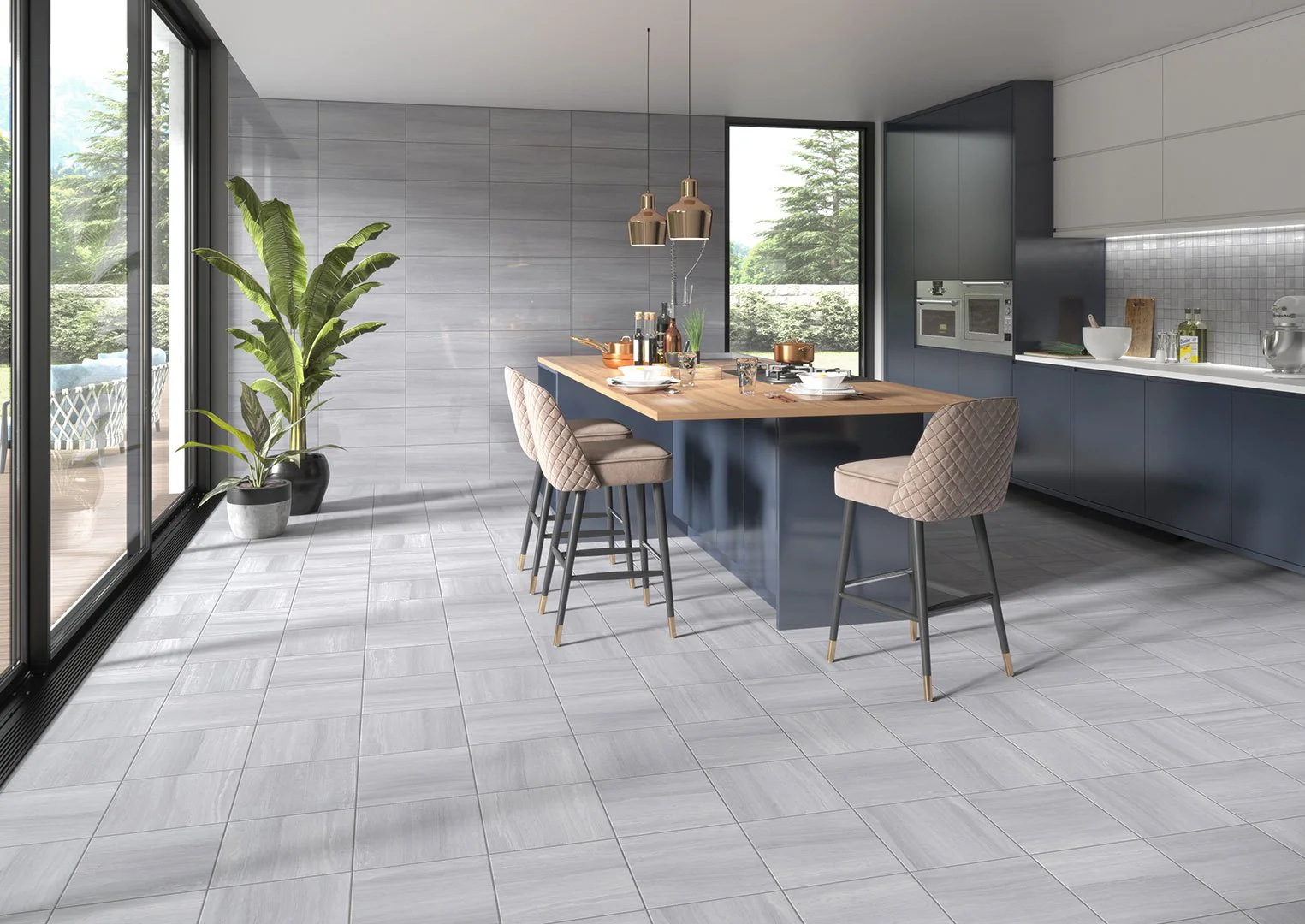
Ceramic Tile Is Dynamic
Ceramic tile’s unique character and texture adds energy, excitement, and enhancement to any room. The multitude of styles, shapes, patterns, colors, and finishes offer you a home that can range from elegant and quiet to vibrant and provocative. Ceramic creates magic and mystique. With a tradition that dates back to ancient civilizations, ceramic tile can be found in ancient structures all around the world.
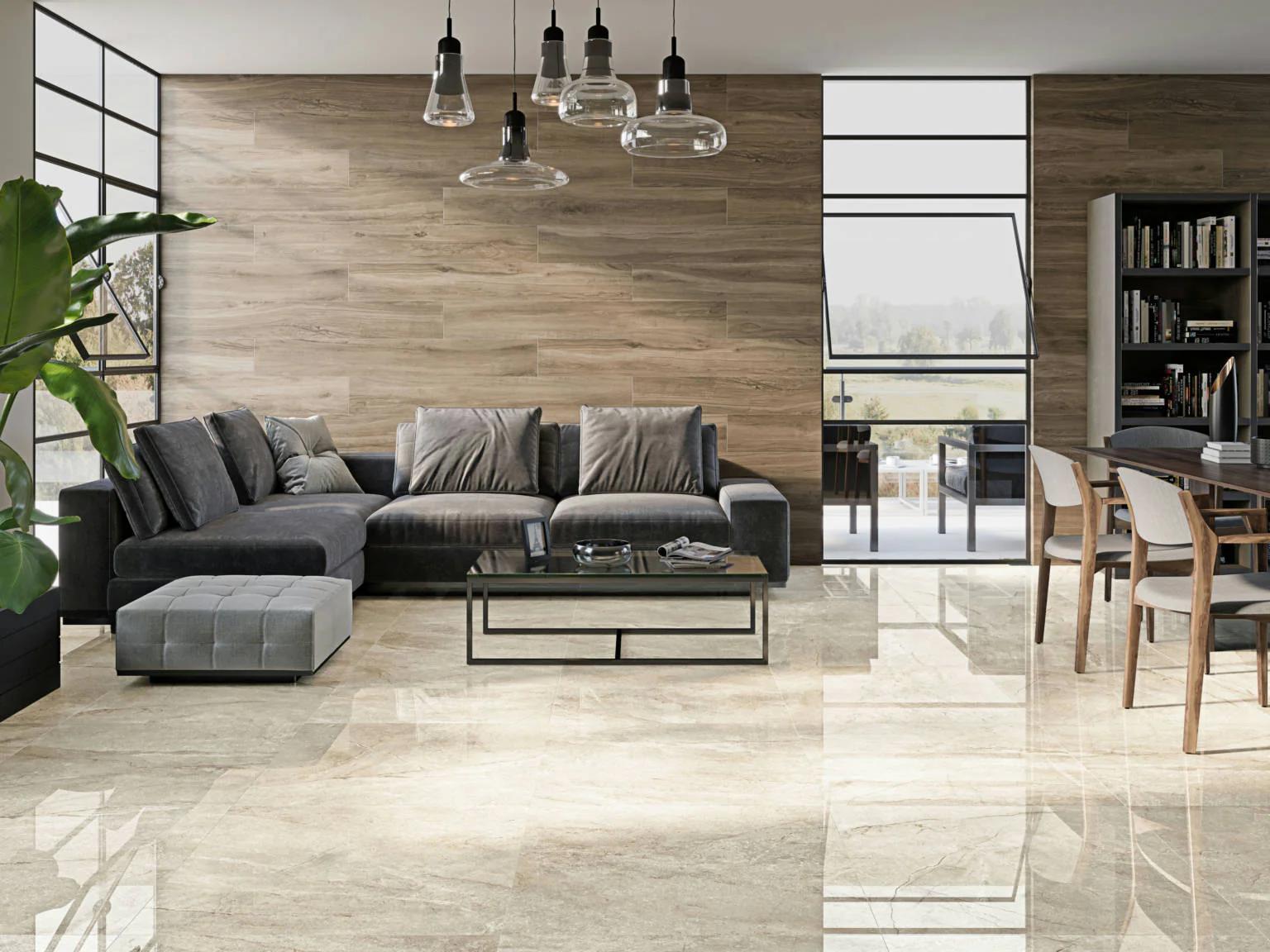
NATURAL INGREDIENTS BRING A NATURAL ELEMENT TO YOUR HOME
Ceramic tile is a natural product made up of clay, minerals, and water. Glazed ceramic tile has a ceramic coating applied to the tile body which gives the tile its color and finish. Tile is durable, easy to care for, and is a low-maintenance material. Ceramic tiles are extremely resistant to scratching and are environmentally friendly. While being both beautiful and versatile, tile also lends itself to being both fire and water resistant.
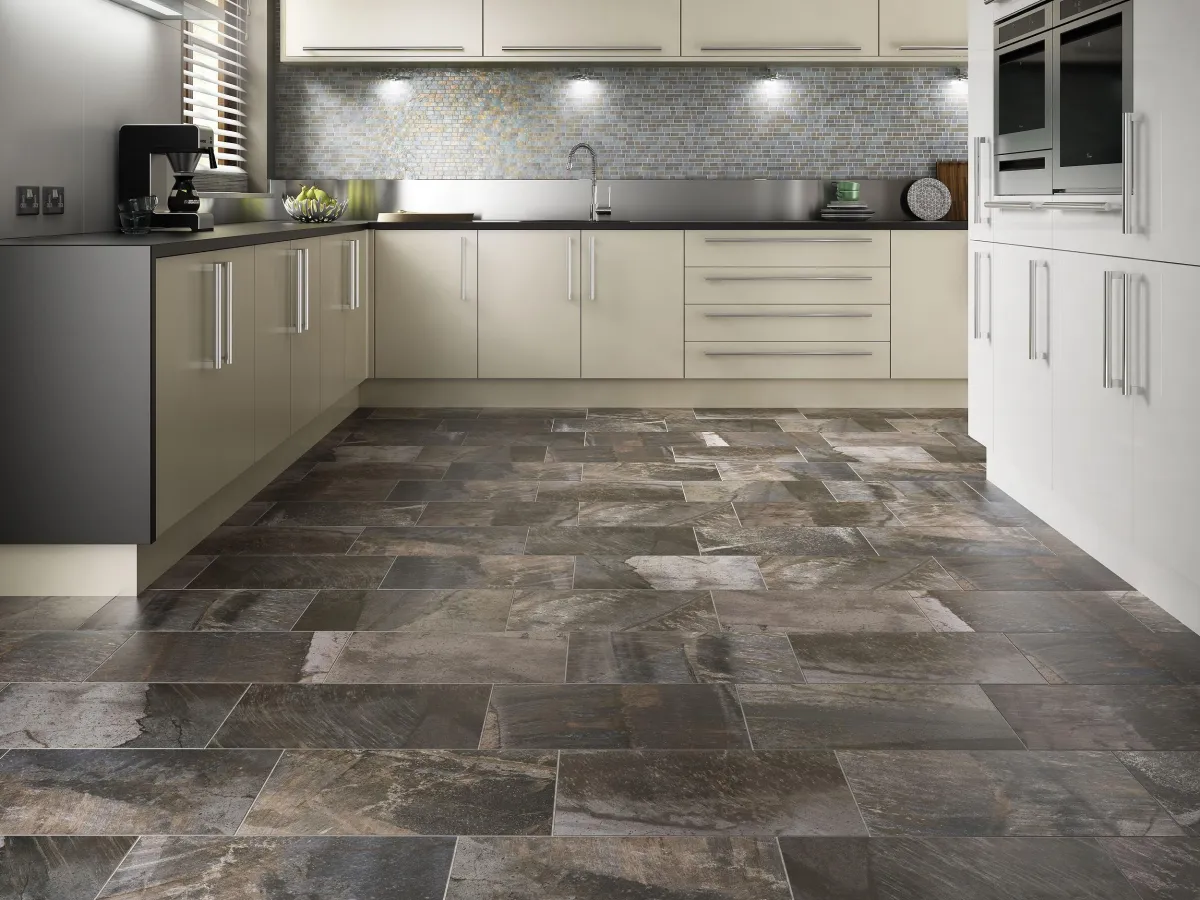
YOUR CHOICES ARE ALMOST ENDLESS
Ceramic tile is a practical, functional choice for your floor. It offers you a unique opportunity for self-expression because of its beauty and design potential. Ceramic tile exhibits a versatility of colored glazes and decoration. You can range from simple terra cotta tiles to highly decorated individual ceramic tiles creating intricate mosaics. Their simple geometric design makes ceramic tile easy to design into different sized spaces and in a diverse range of home styles. This explains the popularity of ceramic tile throughout history.
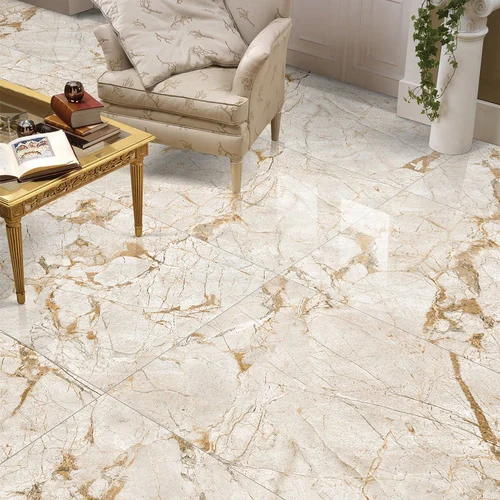
CERAMIC TILE IS A WORK OF ART YOU WALK ON.
How ceramic tile is created is in a world all its own. The process is ancient, and the resulting benefits are many and desirable. Ceramic tile is art underfoot that you will admire as a homeowner. Understanding how ceramic is made helps you to better understand and evaluate its performance aspects. This is important because these are the materials you will be living with for years to come.
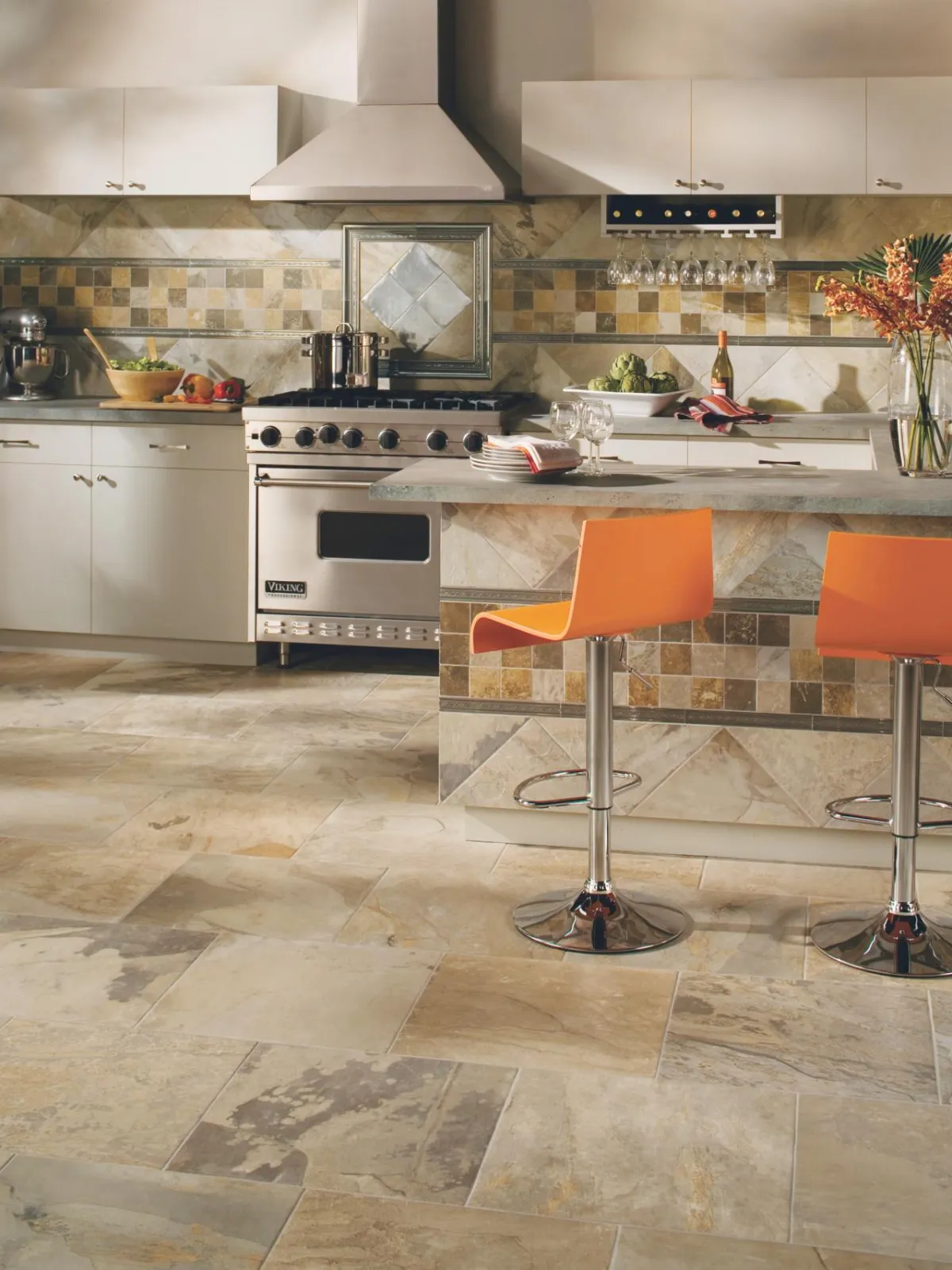
CERAMIC PRODUCTION UNITES EARTH AND FIRE
The main ingredient of ceramic tile and its general manufacturing process has not changed much throughout the centuries. All ceramic tiles are created from natural products extracted from the earth that are shaped into tiles and then fired in kilns at extremely high temperatures.
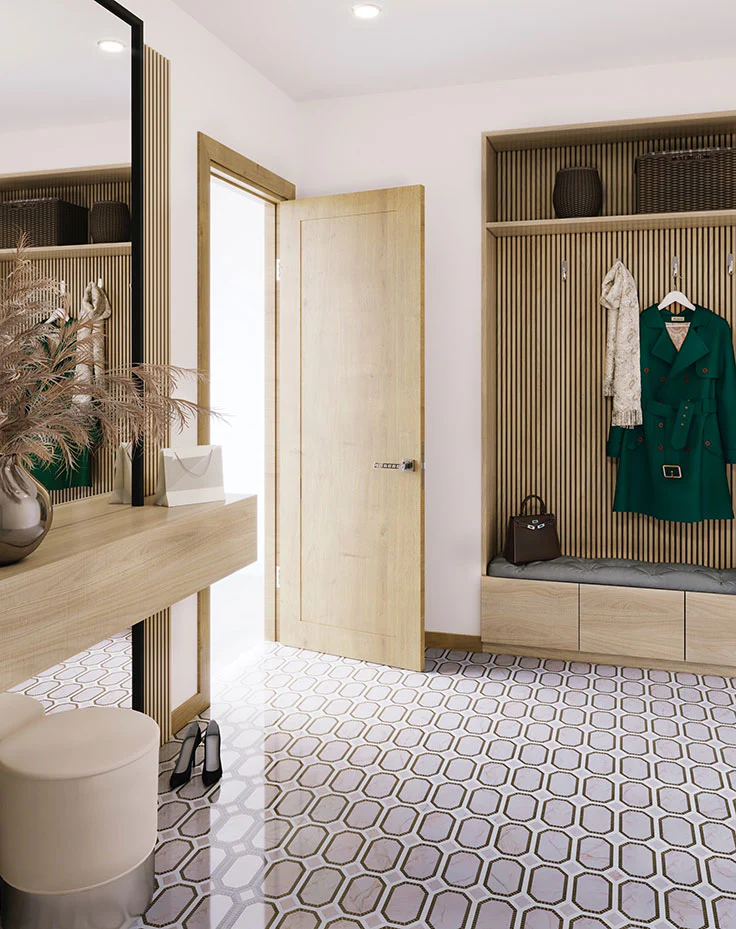
A GUIDE TO THE TWO CLASSES OF CERAMIC TILE
There are two main types of tile constructions: glazed and unglazed. When you look at glazed tile from the side you can see two layers. The top layer is called the glaze. Glazed tile has a hard, non-porous, impermeable surface after firing. They are more stain resistant than unglazed tile and are easy to clean. Unglazed tiles are solid colored all the way through and do not have a top layer of glaze. This is often referred to as through-body construction. They have no additional surface applications and are typically denser and more durable than glazed tile.

THE WORLD OF CERAMIC TILE IS WIDE AND SPECTACULAR
Ceramic tile offers a broad range of textures, patterns, and sizes. When combined with a spectrum of grout and glaze options, they offer significant design variation for any room in virtually any home style.
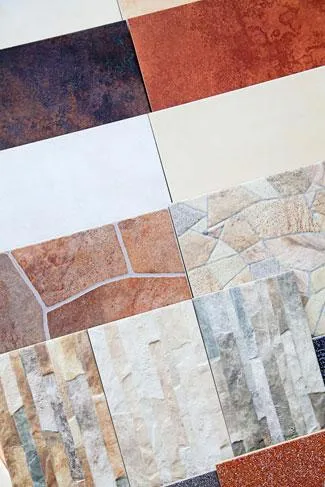
THE BASIC THREE.
There are three types of ceramic tile: glazed, unglazed, and porcelain. Glazed ceramic tiles are coated with glass-forming minerals and ceramic stains. Typically, they have a matte, semi-gloss, or high-gloss finish. They can offer better stain and moisture resistance than unglazed tile. Glazed tiles can also have different finishes and you should be aware of them for future considerations. High gloss finishes can be slippery, and scratches can become more visible, while matte or textured finishes help with traction and scratches, and dirt is less visible.
Unglazed ceramic tiles are very hard and dense. They come in various surface treatments and textures. Typically, these are installed outside your home as they do not offer much protection against stains compared to glazed ceramic tile. Unglazed tiles do have good slip resistance, however, please note that they do require sealing to help prevent staining.
Porcelain tiles usually fall in the ceramic tile category and are the hardest and densest tiles available. Porcelain is made up of 50% feldspar and is fired at a much higher temperature than regular ceramic tile. Because the color in porcelain tile goes all the way through, they are non-porous, resist scratching, and can withstand temperature extremes.
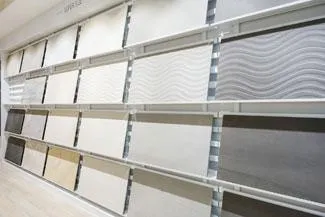
SIZE AND SELECTION ABOUND.
Ceramic tile is manufactured in sizes ranging from 1” to 24” squares. Ceramic tile is normally boxed and priced by the square foot, regardless of the size of the individual tile itself. Tile size is relative and is usually referred to by its nominal size, not its actual size. During the firing process, ceramic tile will shrink by about 10%. When considering what size tile would be appropriate for your given space, start by determining the size of the room. Scale plays as important role in creating a room’s overall balance.
NOT ALL CERAMIC TILE IS SUITABLE FOR EACH AREA OF YOUR HOME.
The beautiful decorative tile you might put on your kitchen backsplash may not be recommended for installation on your floor. Most manufacturers have a rating system that is based on the American Society for Testing and Materials (ASTM). The most common system rates ceramic tile abrasion resistance, or the overall durability of the tile. There are five classes of tile durability.
Class 1: No foot traffic. These tiles are suggested for interior wall applications and not for the floor.
Class 2: Light traffic. These tiles are suggested for interior wall applications and for residential bathroom flooring only.
Class 3: Light to moderate traffic. These tiles can be used for residential floor and wall applications including bathrooms, kitchens, foyers, dining rooms, and family rooms. They are a good all-around performer.
Class 4: Moderate to heavy traffic. These tiles are recommended for residential, medium commercial, and light industrial floor and wall applications, including shopping malls, offices, restaurant dining rooms, showrooms, and hallways.
Class 5: Heavy to extra heavy traffic. These tiles can be installed anywhere. They will hold up in floor and wall applications in high traffic areas such as airports, supermarkets, and subways.
You may also see a rating for slip resistance, which is measures by its Coefficient of Friction (COF). The higher the COF, the more slip resistance the tile. This is important when selecting a floor tile for areas that get wet, such as your shower or bathroom floor.
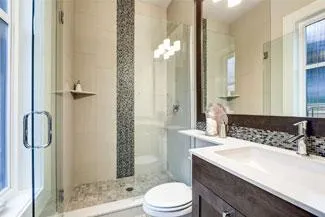
FOR THOSE WHO LOVE TO CUSTOMIZE, CERAMIC IS YOUR BEST CHOICE
The beauty of ceramic tile is the flexibility you have with the design options, especially through the use of accent pieces such as trim work and decorative tiles. First, identify the room and its application. A layout pattern will be designed, the trim and decorative patterns will be determined, and the grout color and type of tile will be chosen.
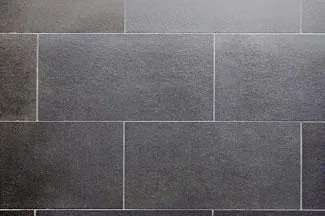
IMPORTANT TIPS ON VARIATION
Many of today’s popular styles of ceramic tile are designed to look and feel like natural stone, emulating their rugged surface and color variations. It is important that you understand these variations when designing with ceramic tile. These tiles are intended to show color and texture variations. Since the composition of the tile’s glaze also varies, different tile styles will also exhibit different gloss levels
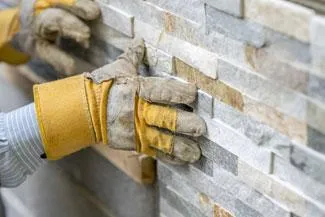
KNOW THE ENTIRE COST OF OWNERSHIP
The “cost-per-square-foot” of your ceramic floor is just one component of the entire project cost. To ensure that there are no surprises, be sure to ask us to calculate the entire cost of your floor covering project so you can determine if it will fit within your budget. Other expenses that may incur are furniture removal, disposal of old floor covering, subfloor preparation, product delivery, and installation.
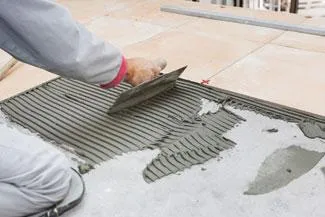
WHAT TO DO BEFORE INSTALLATION DAY
Remove all furniture and other objects from the area where the installation will take place. Be aware that the area of installation must be climate controlled. Indoor humidity should be maintained between 45-65%. Please consider how your old flooring will be taken up and disposed of. Remove all old floor covering at least one day prior to installation of your new floors. If removing old carpet, please leave tack strips in place and pull the staples out of the floor from the original pad. Prepare your existing subfloor or put in a new subfloor, if needed. Make sure the subfloor is as clean and level as possible.
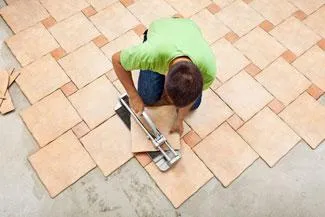
WHAT TO DO ON INSTALLATION DAY
Be prepared to be home on the day of your installation. Your installers will use a variety of tools and techniques that can make the work area hazardous, so make sure that children and pets are kept out of the work area on installation day. In some cases, moldings and baseboards need to be removed for installation. We recommend that prior to the completion of the installation, you do a walk-through with the chief installer. This will give you the opportunity to ask any questions and to be clear on any final details

WHAT TO DO AFTER INSTALLATION DAY
Good ventilation should be established for 48-72 hours after installation. Painted baseboards, woodwork, and paint may need retouching after the installation is complete. If necessary, this will be your responsibility. When your new floor is installed, there is always the possibility that the doors may not clear the new floor and swing freely. You may need to arrange for a qualified carpenter to help rehang or shave down your doors.
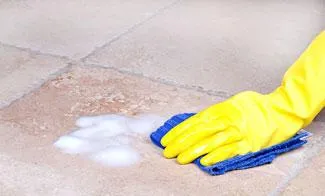
UNDERSTANDING THE MAINTENANCE FOR YOUR NEW TILE
It is important to sweep a tile floor regularly. Dirt can adhere to the surface of tile, particularly styles with a textured surface. Regular sweeping loosens and removes most of the dirt. A vacuum cleaner can also be used to remove dirt from your tile floors but avoid using one with a beater bar, so you don’t dull or scratch the tiles. Attachments from your vacuum are also useful to collect dirt from along edges or in between tiles.
Be sure to use walk-off mats to minimize and contain dirt that is tracked in at entryways. This reduces the amount of dirt being tracked across the tile floor and reduces the wear to the finished surface.
Ceramic tile floors should be damp-mopped regularly using the manufacturer’s recommended grout and tile cleaners. For heavier soil, you can spot clean the floor with a sponge or clean cloth and the recommended cleaners. Rinse well and wipe dry for more shine. Textured tiles may require mild scrubbing with a soft brush or electric polisher.
After cleaning with a mild detergent, rinse thoroughly with clean, warm water to help remove any leftover residue. If needed, wipe dry with a clean towel to remove any film. Make sure to always consult the cleaning product’s instructions to make sure the product is compatible with your type of tile.

CAUTIONS AND CONSIDERATIONS
Avoid using steel wool, scouring powders, or other abrasives that can scratch the finish of the tile. Don’t use bleach or ammonia-based cleaners, as these products can discolor your grout if used too often. Also, don’t clean glazed tile with oil-based cleaners. Try to clean up spills as quickly as possible so that the grout or tile doesn’t become stained.
While ceramic tile is considered very durable, it is not indestructible and may crack or chip under extreme force. Take the proper precautions when moving heavy objects across your tile floor. Cover furniture and table legs with protectors to guard your floor against damage.
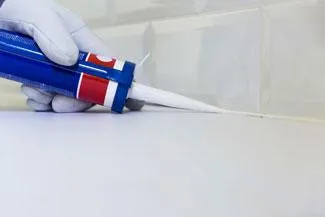
TWO MEASURES FOR PREVENTION: CAULKING AND SEALING
Once the tile has been laid it is your responsibility to maintain areas exposed to water by caulking. This will prevent expensive subsurface damage, as well as keep the tiled areas looking their best.
After the installation process is complete and the grout has had ample time to cure, sealing the grout can provide protection from dirt and spills by slowing down the staining process.
There are also grout colorants that can transform the original color of grout and in some cases act as a form of sealant. Please be aware that non-epoxy grout joints should be treated with a silicone sealer.
Abrasion resistance
The ability of the tile surface to resist wearing away.
ANSI
American National Standards Institute, a standard development organization.
ASTM
American Society for Testing and Materials International, a standards development organization. Most manufacturers will have a rating system that is based on or supported by the American Society for Testing & Materials (ASTM). Many times you can find these ratings on the tile sample or in the product catalog. The most common system rates ceramic tile abrasion resistance or the overall durability of the tile. Other ratings might include: scratch resistance, moisture absorption, chemical resistance and breaking strength.
Back-buttering
Spreading a bond coat to the back of a ceramic tile immediately before the tile is laid.
Backerboard
An underlayment material in the form of a panel or board which is typically fastened directly to the framing (walls) or subfloor (floors) and used as a substrate for ceramic tile.
Back-layered tile
A tile with a material, commonly mesh, which has been attached to its back for reinforcing purposes.
Biocuttura Tile
Ceramic tiles are fired in a kiln at temperatures around 2000 degrees Fahrenheit. Biocuttura Tiles are first fired after the green tile is dried and then fired again after the glaze is applied. Also call Double Fired.
Bisque
When you look at a glazed tile from the side you can see 2 layers. The body of the tile, or largest layer, is called the bisque. The top layer is called the glaze.
Border
A strip of motif tile that creates a design concept.
Brick joint or Running bond
Tile installation with each row offset, usually by half its length. Common with subway tiles on wall installations. If the side to be offset is greater than 15 in., a maximum offset of 1/3 is recommended.
Bright gloss
Colorless or colored ceramic glaze with a high gloss.
Brushed finish
A finish commonly used on stone or metal with the appearance of having been wire brushed.
Bullnose
Trim tile with a radius on one edge, used for finishing an edge, outside corner or floor base.
Sometimes it is also used as a substitute for cove base.
Calibrated tile
Tiles that have been sorted to meet a specific size tolerance range.
CBU
Today, many tile ceramic tile installers have opted for the industry accepted and more efficient thin set method, where the tile is adhered directly onto a backer board that is nailed to a plywood or concrete substrate using a much thinner layer of mortar. This backer board is called a CBU, or cement backer unit, which provides a supportive and water-resistant layer between the porous substrate and the mortar and tile applied on top of it.
Ceramic
Ceramic tiles are created from natural products extracted from the earth that are shaped into tiles and then fired in kilns at extremely high temperatures.
Ceramic mosaic tile
Tiles having a facial area of less than 9 in². Typically mounted in sheets or strips with other mosaic tiles.
Ceramic tile
A ceramic surface component, usually relatively thin in relation to facial area, having either a glazed or unglazed face and during manufacturing, fired to a temperature sufficiently high to product specific physical properties and characteristics. The different types of ceramic tiles are as follows: porcelain tile, pressed floor tile, quarry tile, wall tile, and ceramic mosaic tile.
Classes 1-5
Class 1:
no foot traffic. These tiles are suggested for interior wall applications only and not for the floor.
Class 2:
light traffic. These tiles are suggested for interior wall applications and for residential bathroom flooring only.
Class 3:
light to moderate traffic. These tiles can be used for residential floor and wall applications including bathrooms, kitchens, foyers, dining rooms and family rooms. They’re a good all-around performer.
Class 4:
moderate to heavy traffic. These tiles are recommended for residential, medium commercial and light industrial floor and wall applications including shopping malls, offices, restaurant dining rooms, showrooms and hallways.
Class 5:
heavy/extra heavy traffic. These tiles can be installed anywhere. They will hold up in floor and wall applications at airports, supermarkets and subways.
COF
See DCOF
Most manufacturers will have a rating system that is based on or supported by the American Society for Testing & Materials (ASTM). Many times, you can find these ratings on the tile sample or in the product catalog. One rating system measures Slip Resistance, which is measured by its Coefficient of Friction (COF). The higher the COF the more slip resistant the tile. This is important when selecting a floor tile for areas that get wet, such as your shower or bathroom floor. Other ratings listed by the manufacturer might include: scratch resistance, moisture absorption, chemical resistance and breaking strength.
Corner Bullnose
A ceramic floor tile trim that has two rounded finished edges on the tile to be used to complete a corner.
Cushion-edged tile
A tile on which the facial edges have a distinct curvature that results in a slightly recessed joint.
DCOF
DCOF AcuTest® is a registered TCNA designation for the test procedure contained in ANSI A137.1 Section 9.6., which has been extensively researched, allows for in-situ field measurements, and is in use at tile manufacturing facilities. It was so named to distinguish it from other DCOF measurements using different instruments and/or protocols.
To meet the new DCOF AcuTest® criteria, you cannot use old COF values from C1028 measurements. As the methodology is different, there is no direct correlation from C1028 values to DCOF AcuTest® values.
Decorative mosaics
Small tiles or bits of tile, stone or glass forming an attractive design.
Decorative tile
A tile that features decoration on the surface.
Distressed edge
A ceramic or stone tile edge with the appearance of an antique or used look.
Encaustic
Tile decorated with colored clays, inlaid and fired.
Extrusion
Extruded tiles are formed by forcing the clay material through a mold for the desired shape versus pressing the tile.
Field Tile
When creating a pattern with different ceramic tiles, the more prominent tile that is throughout the largest areas is called the “field tile”. It is the primary area of tile covering a wall or floor
Fire, bisque
Kiln- firing ceramic ware before glazing
Fire, single
Subjecting ceramic body and its glaze to one firing operation
Firing
The fifth step in the manufacturing of ceramic tile. The tiles are fired in the kiln at temperatures around 2000 degrees Fahrenheit.
Floor tile
A manufacturer-specified ceramic tile (including porcelain) primarily for use on floors, but also suitable for use on walls and countertops, and having a facial are of 9 in² or more.
Frit
Part of the fourth step (glazing) in the manufacturing of ceramic tile. The glaze liquid is prepared from a glass derivative called frit and colored dyes. The glaze is applied by either a high-pressure spray or is poured directly onto the tile.
Frost-resistant tile
Tile that can be used where freezing and thawing conditions exist; suitable for outdoors.
Gauged tile
A tile which has been manufactured to a specific thickness where its thickness largely associated with how it is installed and/ or used. Gauged tiles can be used in wall or floor applications depending on manufacturer’s recommendations.
Glass mosaic tiles
Tile made of glass not exceeding 9 in², usually mounted on sheets.
Glazed
Glazed ceramic tiles are coated with glass-forming minerals and ceramic stains. Typically, they have a matte, semi-gloss or high-gloss finish. They can offer better stain and moisture resistance than unglazed tile. When you look at a glazed tile from the side you can see 2 layers. The body of the tile, or largest layer, is called the bisque. The top layer is called the glaze. Glazed tiles have a hard non-porous, impermeable surface after firing.
Glazing
The fourth step in the manufacturing of ceramic tiles. Glazing liquid is prepared from a glass derivative called frit and colored dyes. The glaze is applied by either a high-pressure spray or is poured directly onto the tile.
Green Tiles
The third step in the manufacturing of ceramic tile. Here, clay is pressed or formed into a tile shape. These pressed tiles are called green tiles at this stage.
Grout
Grout is a type of cement that is used to fill the space and provide support in tile joints. There are two types of grout commonly used in home installations; Portland cement based, and epoxy based. Both grout compounds may have sand added to provide additional strength to the tile joint. Pigment is added to the cement at the job site when the grout is mixed.
Honed
A satin surface with little or no gloss.
Inkjet printing
Method for applying color finishes to tiles before firing in the production process, like the way pages are printed using an inkjet printer. Allows for various resolutions (dots per inch or DPI), multiple images and patterns to be created and repeated. For tiles with structured surfaces, this method of printing is effective for decorating “peaks” and “valleys.”
Impervious Tiles
Tile that have less than .5% moisture absorption. These tiles are frost proof and can be used in exterior areas or on the outside of building facades. You can use these where winter is for real.
ISO
International Organization for Standards, a standards development organization.
Lippage
A detectable change in elevation between the edges of tiles sharing the same grout joint. Lippage may be related to an uneven substrate, excessive tile warpage, and/or installation.
Listello
A decorative border primarily for walls.
Marble tiles
Marble cut into tile sizes 2 ft. x 2 ft. or less and ¾” or less thick.
Membrane
An underlayment material, usually in the form of a sheet or trowelable liquid or paste, applied to the substrate prior to tile installation. Common uses of membranes include: isolating substrate cracks from the tile and mortar (crack isolation membranes), waterproofing (waterproof membranes), prevention of sound travel (sound reduction membranes), providing an air space for additional substrate curing after tile installation (uncoupling membranes), or a combination of these properties.
Moisture Absorption
As the density of the tile increases, the amount of moisture that tile can absorb becomes less. Tile density means that, as the weight or the density of the tile increases, it becomes a stronger tile. Tile density and moisture absorption have an indirect relationship to each other. What this means is that as the density of the tile increases the moisture absorption rate becomes less. Tile density and moisture absorption is important for you to understand when selecting tile for different applications.
Monocuttura Tile
Ceramic tiles are fired in a kiln at temperatures around 2000 degrees Fahrenheit. Tiles that are fired once after the glaze is applied are called Monocuttura Tile or single fired.
Mortar
A blend of cement, sand, and additional compounds which may include polymers or other additives to improve adhesion, accommodate movement, and add strength. The primary function of mortar is to adhere tile to a substrate. Tiles can be set in a thick reinforced mortar bed or can be applied directly to a substrate with dry-set mortar, modified dry-set mortar, or improved modified dry-set mortar using the thin-set method.
Mosaics
In addition to ceramic tile styles, manufacturers also offer decorative inserts, medallions and mosaics that are used to create intricate patterns and beautiful borders. Tile size 2”x2” and smaller are usually referred to as mosaics and are often used with different colors to create a pattern or decorative inset. Some of these smaller tiles also come in different shapes, such as hexagon.
Mounted tile
Tile assembled into units or sheets to ease installation. May be mounted on the back, edge or face of the tile using mesh, plastic, paper, or glue dots.
Mud
Slang for mortar.
Nominal Size
Tile is usually referred to by its
nominal size, not its actual size. During the firing process, ceramic tile will shrink, on average, by about 10% in size. For example a 12” by 12” floor tile can measure 11-7/8 inches square. Currently, the most popular ceramic floor tile are the larger sized tiles such as 16”x 16”, 18”x 18” or 24” x 24” sizes.
Non-Vitreous Tiles
This is a type of tile that absorbs 7% or more moisture. They are suited for indoor use only.
Notched Trowel
A tool used to apply mortars, adhesives and liquid membranes to a substrate. Often constructed of rigid metal or plastic with a handle and available in various shaped notches (e.g. “square” notch, “V” notch, “U” notch) and sizes to accommodate different applications.
Pavers
A general term for floor tile.
Polished
A glossy surface achieved through mechanical means.
Porcelain
Porcelain tile is made up of 50% feldspar and is fired at a much higher temperature than regular ceramic tile. This makes porcelain tile much harder and more dense than other tile products. Because of its highly durable make-up, porcelain is more resistant to scratches and can withstand temperature extremes. Also, because porcelain is non-porous, it’s very stain resistant, has very low water absorption ratings (Less than 0.5%) and thus can be used for interior and exterior applications as well as heavy-use and commercial areas. Finally, because porcelain’s color goes all the way through, small scratches or chips are less noticeable.
Pressing
The third and most common step in the manufacturing of ceramic tile. The clay is pressed or formed into a tile shape. These pressed tiles are called green tiles at this stage.
Quarry tile
Glazed or unglazed tile, made by the extrusion process from natural clay or shale.
Rectified Tile
A tile that has had all edges mechanically finished to achieve a more precise facial dimension.
Rotocolor printing
Method for applying color finishes to tiles to tiles before firing in the production process. Tiles pass under a coated roller and finishes are transferred onto the tile. Rollers may be solid or patterned and can produce repeatable but random designs. On structured tiles, coatings are only applied to the “peaks” with this method.
Rubbing stone
A stone used where necessary by installers to smooth the rough edges of tile after cutting.
Running bond or Brick joint
Tile installation with each row offset, usually by half its length. Common with subway tiles on wall installations. If the side to be offset is greater than 15 in., a maximum offset of 1/3 is recommended.
Sanded Grout
There are two types of grout commonly used in home installations; Portland cement based, and epoxy based. Both of these grout compounds may have sand added to provide additional strength to the tile joint. Sanded grout is recommended for tile joints 1/8th of an inch and larger.
Sanitary Cove Base
A ceramic floor tile trim that has a rounded finished top like a bullnose to cover up the body of the tile.
Semi-Vitreous Tiles
Tiles that absorb from 3% to 7% moisture. They are applicable for indoor use only.
Shade Variation
Shade variation is inherent in all fired ceramic products and certain tiles will show greater variation within their dye lots. Shade variation is usually listed on the back label of each sample with a low, moderate, high or random rating.
Low:
consistent shade and texture.
Moderate:
moderate shade and texture variation.
High:
high shade and texture variation.
Random:
very high shade and texture variation.
Snap-cutter
A cutting tool for tile. A wheel is used to score the tile in a straight line followed by an application of pressure to either side of the line to create a controlled break.
Substrate
The process for installing a ceramic floor begins with the preparation of the tile foundation, or what’s called the
substrate. Common materials used as tile substrates in home installations include concrete, plywood, and drywall.
Thin-set
In the past, ceramic tile was installed using what is called the thickset or mud set method. In this method, a thick layer of mortar was applied to a waterproofed and steel reinforced substrate. This provided a strong, flat base onto which the tile was installed. The thickset method is effective, but it’s an involved and labor-intensive process. Today, many tile installers have opted for the industry accepted and more efficient thin set method, where the tile is adhered directly onto a backer board that is nailed to a plywood or concrete substrate using a much thinner layer of mortar.
Thin tile
Slang for gauged tiles with a thickness of 6.5 mm or less
Through Body
Unglazed tiles that are a solid color all the way through and do not have a top layer of glaze are often referred to as through-body construction. (See Unglazed.)
Tile Density
Tile density means that, as the weight or the density of the tile increases, it becomes a stronger tile. Moisture absorption means that, as the density of the tile increases, the amount of moisture that tile can absorb becomes less. Tile density and moisture absorption have an indirect relationship to each other. What this means is that as the density of the tile increases the moisture absorption rate becomes less. Tile density and moisture absorption is important for you to understand when selecting tile for different applications.
Trim pieces
Various shapes of bases, caps, corners, moldings, angles, etc.
Tumbled
Tiles with tumbled, round edges producing an aged, antique appearance.
Unglazed
Unglazed tiles are a solid color all the way through and do not have a top layer of glaze. This is often referred to as through-body construction. They have no additional surface applications and are typically more dense and durable than glazed tile making them more suitable for interior and exterior applications. Unglazed tiles do have good slip resistance, however please note that they do require sealing to help prevent staining. They come in various surface treatments and textures.
Unsanded Grout
There are two types of grout commonly used in home installations; Portland cement based, and epoxy based. Both grout compounds may have sand added to provide additional strength to the tile joint. Unsanded grout is typically used in joints that are smaller than 1/8th of an inch.
Vitreous Tiles
Tiles that absorb less than 3% moisture. They are referred to as frost resistant tiles but cannot be used in exterior areas where freeze- thaw conditions could cause tile cracking.
Wall tile
A glazed tile for interior use on walls. These tiles are not typically expected to withstand excessive impact, abrasion, or be subjected to freeze/thaw cycling.
Warpage
The measured curvature of a tile.
Water Absorption
A physical property of tile. An indication of tile porosity from measuring how much water can enter the body of a tile.
Wet Saw
A cutting tool for tile. An electric saw typically fixed to a table which most commonly uses a diamond-coated blade to cut the tile while water is applied to cool the blade and reduce dust.
About Us
Transform Your Space with Top-Quality Craftsmanship
Contact Us
5282 Crookshank Rd, Cincinnati OH 45238
Phone (513) 922-3466
Copyright© 2025 Schoch Tile - All Rights Reserved.
